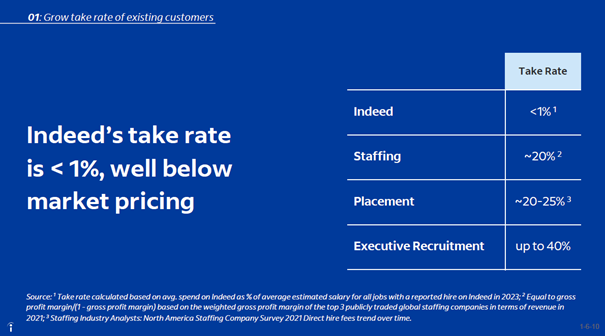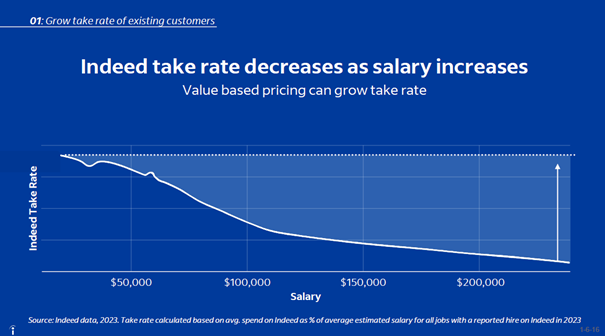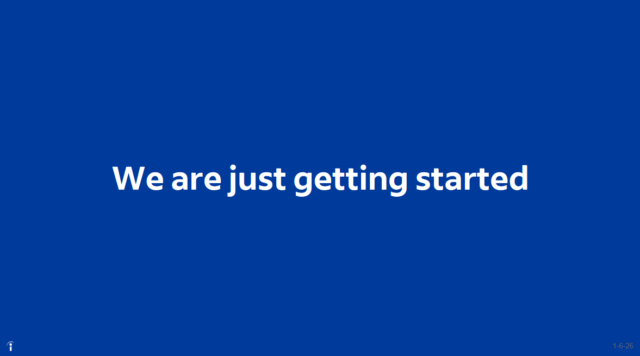Ben Zweig is the CEO of Revelio Labs, a workforce intelligence company that leverages the latest advances in AI research to create a universal HR database from public sources. Revelio Labs’ mission is to provide unique insights and uncover trends in Human Capital to empowering businesses and investors.
They index hundreds of millions of public employment records. According to Revelio Labs, their ‘universal HR database’ allows them to understand the workforce dynamics of any company. Revelio Labs’ customers include investors, corporate strategists, HR teams, and governments.
Founder Zweig works in New York, where he also teaches courses on Data Science and The Future of Work at NYU Stern. He will be a keynote speaker at the second Talent Intelligence Conference. Since one of his courses is ‘Data Bootcamp’, we can trust him to deliver the goods in ultra record time, NY-style.
Talking by Teams from his office in New York, Ben tells how the focus on workforce analytics is important, ‘because we believe organizations and people suffer from a lack of understanding of the world’s talent. Workforce data, unlike financial data, lacks the standardization necessary to develop sophisticated insights. Yet labor markets are the largest and most important markets in the world.’
Enter Revelio Labs, that aims for a more efficient, transparent and scientific workforce market, using teams of data scientist, economists and engineers.
But to understand how Ben Zweig uses Talent Intelligence at his company, he tells first about the beginning of the company. ‘I started the company back in 2018 and it’s a Talent Intelligence company. I mean, I sort of started this before even knowing that Talent Intelligence was a term.’
‘I used to run a workforce analytics group at IBM and really thought that the analyses we were doing were interesting, but very limited. Limited because we didnt really have any outside information. We always analyzed internal IBM data and we just had no context. We didn’t have any ability to get strategic and look at how we were differentiated.’
‘So I started Revelio Labs with the idea of bringing external data and benchmarking to the HR space. It turns out that was happening in parallel by other people too: Talent Intelligence in my mind is about bringing external data into HR and into the business.’ TI is progressing really fast, says Zweig, which he finds really very exciting.
‘I think I got introduced to The Talent Intelligence Collective and the podcast by Alison Ettridge and Toby Culshaw maybe two years ago, two to three. At that point, it really clicked. Wow, here’s groups within companies that are on the way to, you know, doing things the way that I had hoped that things would evolve.’
‘And I was trying to nudge things in that direction from my perspective. For a while I really thought the mission of Revelio was to kind of bring people analytics function to more of this external view. I realized there’s this other function that’s much more like philosophically aligned and hungry for data and really thinks in a different way.’
‘In HR, there’s a lot of organizational psychologists, and that’s sort of the mentality that permeates this kind of function. I came into that space differently: I’m a labor economist.’
‘So I had done research in labor economics. As a labor economist, I really think a little bit differently. We think more about data, more about the external market and more about the context and the applications of using data for this in a more rigorous way. The Talent Intelligence community is more like labor economists mentally than like organizational psychologists. As a discipline, they’re very aligned to how I see the world.’
Any essential difference between labor economics and organizational psychology?
‘Talent intelligence is basically labor economics. It’s very, very similar. The data is the same, the questions are very similar, the mentality is the same. TalentIintelligence could get renamed the labor economics team…. (laughs) They just don’t know it yet.’
So what kind of questions do you answer with your company? What kind of questions do you help your customers with?
‘The questions are really varied, whereas the data set is really the same. After all, we think of what we do as like primarily constructing this universal HR database. Massive data sets of like profiles, postings, sentiment ratings, salaries, freelance platforms, layoff notices and immigration files. Anything and everything.’
‘We really want to centralize this database, curate, enrich it and make it like really easy to navigate and pull for whatever purposes. Once we have the database, the way customers use it is up to them. Most of the time they use the base to analyze companies. Where are there spikes in the attrition rates of key roles at companies? You know, like what’s happening at this company? What’s the composition of their workforce? What are the markets they’re in? Understanding companies and their competitors. So that, for instance, if you want to analyze Java developers in Bangalore, you can have a really deep, thorough analysis because it all comes from the same data.
How do you ensure the quality of the data? They are not recorded in the same way from country to company.
Yes, workforce data is a mess. Last year I talked at the conference about all the possible problems you have with the underlying raw data. And the processing and enrichment you need to do, to get the data to be actually useful. For example: using LinkedIn profiles as a source is problematic because every person just writes in whatever they want, free text. There’s different conventions for titles, there’s different languages, company names, seniority levels, different skills. Tons and tons problems. The messiest data you can imagine. Obviously, a lot of work.’
‘But as a technology provider this is one of the justifications for our existence: getting a handle on this dat. We at Revelio Labs want to centralize that effort so that everybody can benefit. Let’s say we have a model to detect fake users, that might be like a six month project. But then it’s global, and it’s general. It would be crazy for every company to take on this six month project to solve one problem when there are 100 other problems to solve. We have a team of 60 fulltime data scientists and engineers who are just solving this kind of problems.’
So you volunteer your company to do this for the rest of the world. A monopoly for your platform.
‘90% of data analysis is cleaning data, and the other 10% is complaining about cleaning data. Somebody has got to do the cleaning process, and nobody really wants to. I think my team is excited by it, just because they’re really challenging problems. And the data are difficult to scale. So we really want to be kind of like a Bloomberg-terminal. Bloomberg takes in all this financial data and does the curation. At the end of the day, everyone in finance just has all this clean, nice, neat data at their fingertips, to do their day job.
And Bloomberg has a monopoly, gets very, very rich.
‘That would be a nice outcome for everybody, there’s a lot of scalability in that business model. But an important goal is also to mature the field. I’d love to see a world where everyone in HR just does their job with data at their fingertips.’
New trends you want to talk about at the conference?
‘To go beyond geography or market level analysis, we need to do more strategic benchmarking, to support strategic workforce planning. And that’s what you really find more in competitive benchmarking.’
‘Another thing would be making a kind of tools and applications to help recruiters help themselves. So you get the Talent Intelligence function on a lower level in the organization. Not just TA-directors, also recruiters and sourcers. Granular actionable workforce insights for more people in the organization. Revelio Lab’s mission should be not only solving a problem, but also contributing to broader industry or societal progress. For a startup in this field developing a product with a clear, mission-driven purpose, it can differentiate you in a crowded market.’
‘Essentially, I am advocating for imperialism of Talent Intelligence. I’m really advocating for expanding the scope of TI to get both broader, you know, in terms of planning and, and deeper in terms of helping recruiters. Maybe you’re going to be stepping on people’s toes. Challenges are: it’s more work to take on and it’s just going to require more resources and time. Another challenge is organizational friction. Maybe you’d be getting in the way of computer and people analytics and other groups that consider this their turf.’
Join us at the Talent Intelligence Conference 2024!
Tickets








 This aligns with Matt Alder’s prediction, who anticipates that by 2034, recruitment and selection will be heavily data-driven, with AI and automation playing a central role. “While it presents a challenge, skills-based hiring can lead to a fairer and more effective recruitment process, enabling organizations to find and retain the right talent. Organizations need to look beyond current processes and explore how technology can fundamentally transform their operations.”
This aligns with Matt Alder’s prediction, who anticipates that by 2034, recruitment and selection will be heavily data-driven, with AI and automation playing a central role. “While it presents a challenge, skills-based hiring can lead to a fairer and more effective recruitment process, enabling organizations to find and retain the right talent. Organizations need to look beyond current processes and explore how technology can fundamentally transform their operations.”








